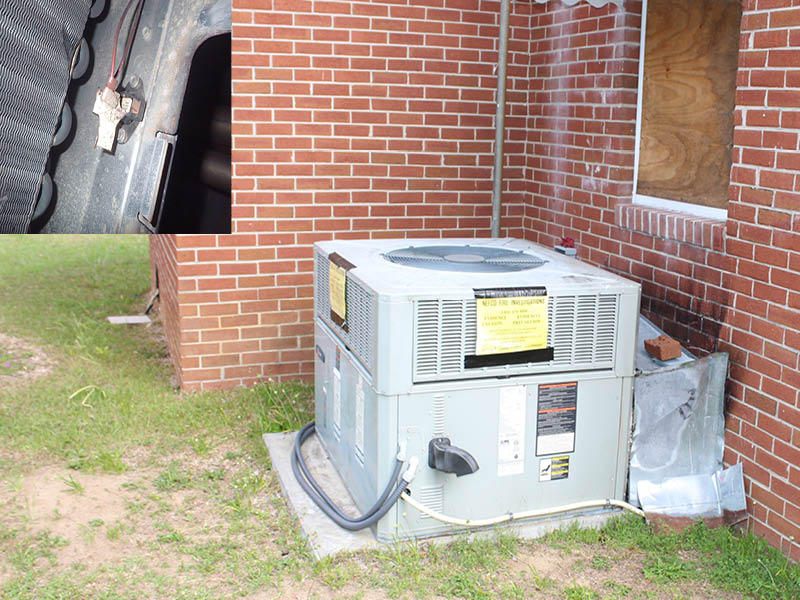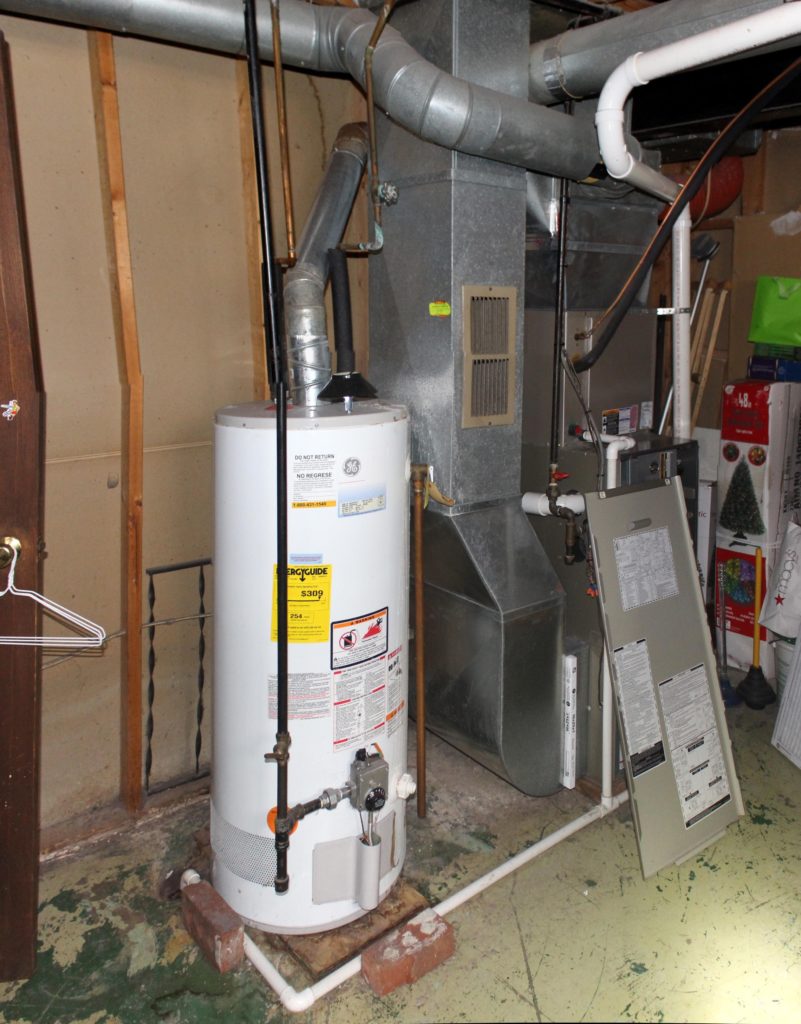When fall and winter arrive and temperatures drop, it is a great comfort to have a heating system to warm your home or office. Several categories of heating equipment exist to provide both primary and secondary heating. Primary heating systems include fuel gas/fuel oil/electric forced air furnaces, heat pumps, hydronic heating/steam systems and even wood-fired heating systems. Secondary heating equipment includes electric, gas and kerosene space heaters of both fixed and portable design, and fireplaces. Each of the different types of heating systems have unique hazards that, uncontrolled, can result in fires, explosions, burn injuries, and carbon monoxide poisoning. Some of these systems and the ways in which their hazards are controlled will be examined in this and forthcoming blogs.
This first blog examines central forced air furnaces, the way most modern homes are heated. Figure 1 shows a typical installation of a packaged or unitary forced air furnace. These systems utilize a central air handling unit composed of a fan section with attached heating section, for example a fuel fired heat exchanger or electric heating coil. Heat from the combustion of a fuel (natural gas, propane, or fuel oil) or an electrical resistance heater is carried throughout the home via ducts.
Several codes and standards address residential central forced air furnaces. These include: UL 1995, Standard of Safety for Heating and Cooling Equipment; UL 60335-2-40, “Standard of Safety for Household and Similar Electrical Appliances, Part 2- 40: Particular Requirements for Electrical Heat Pumps, Air-Conditioners and Dehumidifiers”; and UL 1996, “Standard of Safety for Electric Duct Heaters”. Other standards such as UL 795 Commercial-Industrial Gas Heating Equipment address heating systems more typically seen in larger nonresidential applications. Building codes such as the ICC International Residential Code require use of forced air furnaces that meet these and other standards. Other codes such as the NFPA 70 National Electrical Code, NFPA 54 National Fuel Gas Code, ICC International Fuel Gas Code, and the ICC International Mechanical Code address aspects of the installation of forced air furnaces that should be followed to ensure a safe installation.
Forced air furnaces are normally trouble-free, but occasionally they can be problematic, even causing fires or other catastrophic losses. Types of losses fall into several categories, many of which relate to improper installation or poor maintenance, although defects in the design or manufacturing of equipment do occur. One fairly frequent incident relates to a loss of airflow through a unit while the heating system continues to operate. Because air flow has been reduced or lost completely, energy from the heating mechanism, like the gas burners, cannot be removed and thus local temperatures rise to the point of igniting material in and around the unit. Figure 2 shows a gas furnace that experienced a fire when an improper repair bypassed a high temperature limit that should have stopped the unit burner when the fan failed.

Figure 2: A gas-fired furnace that experienced a fire at its connection to the building due to a loss of air flow and bypassing of the unit’s high temperature limit switch (inset photo). The fire was more damaging than externally apparent, having damaged almost the entire wood framing within the crawlspace of the residence.
Another problem that can occur with gas-fired furnaces is a failure to safely remove carbon monoxide (CO) produced by the burners. Excessive generation of CO and/or failure to vent products of combustion can result in sickness and death of occupants. Essentially all carbon-based fuel fired devices produce some carbon monoxide. Proper design and installation prevents excessive creation of CO and effectively vents any CO that is created. Careful attention is required to the venting of fuel-fired furnaces and the provision of makeup combustion air to ensure clean combustion and that all products of combustion are safely removed from the dwelling and discharged in a safe manner. Figure 3 shows a gas furnace and water heater installed in a basement of a home. Improper venting resulted in a carbon monoxide fatality at the residence.

Figure 3: A gas-fired furnace and water heater that were installed at a home that experienced a carbon monoxide fatality.
Another way a furnace can result in a fire loss relates to not maintaining proper clearances to the unit. Some of the standards previously mentioned establish clearances that must be maintained between the heating appliance and adjacent combustible materials or other surfaces. Proper clearance also ensures that combustion air can enter the unit. When these practices are not followed, excessive temperatures can be created, or excessive carbon monoxide generated. The manufacturer’s installation requirements must be followed closely to avoid these problems. Figure 4 is of a unit that was installed in an attic space with improper clearance under the unit. Additionally, insulation was improperly blown around the bottom of the unit, causing retention of heat and blocking combustion air to the bottom mounted burners. The result was a fire that started under the unit.

Figure 4: An attic mounted gas-fired furnace that experienced a fire under the unit due to improper clearance to combustibles and improper insulating practices.
In this blog, a few ways in which forced air furnaces can cause fires or carbon monoxide poisoning have been reviewed. These are certainly not the only ways that forced air furnaces, or their installation, can cause problems. Some other problems include incorrect wiring practices that result in a fire and explosions from gas leaks and valve failures. Stay tuned for more blogs in the future that examine other types of losses involving heating systems. In the meantime, try and stay warm (safely)!
Founded in 1997, The Warren Group, forensic engineers and consultants provides technical investigations and analysis of personal injury and property claims as well as expert testimony for insurance adjusters and attorneys. Extremely well versed in the disciplines of mechanical, electrical, chemical, structural, accident reconstruction and fire and explosion investigation, our engineers and consultants are known for delivering the truth — origin, cause, responsibility and cost of an event or claim — with unmistakable clarity.




